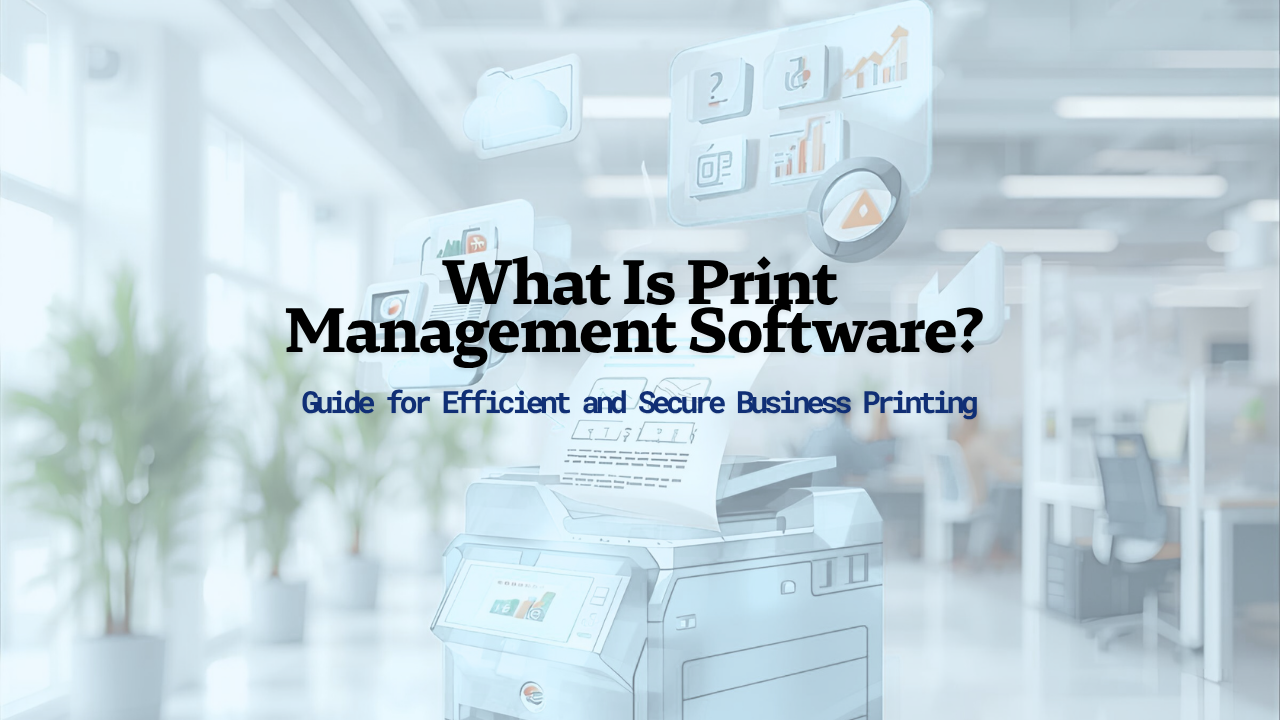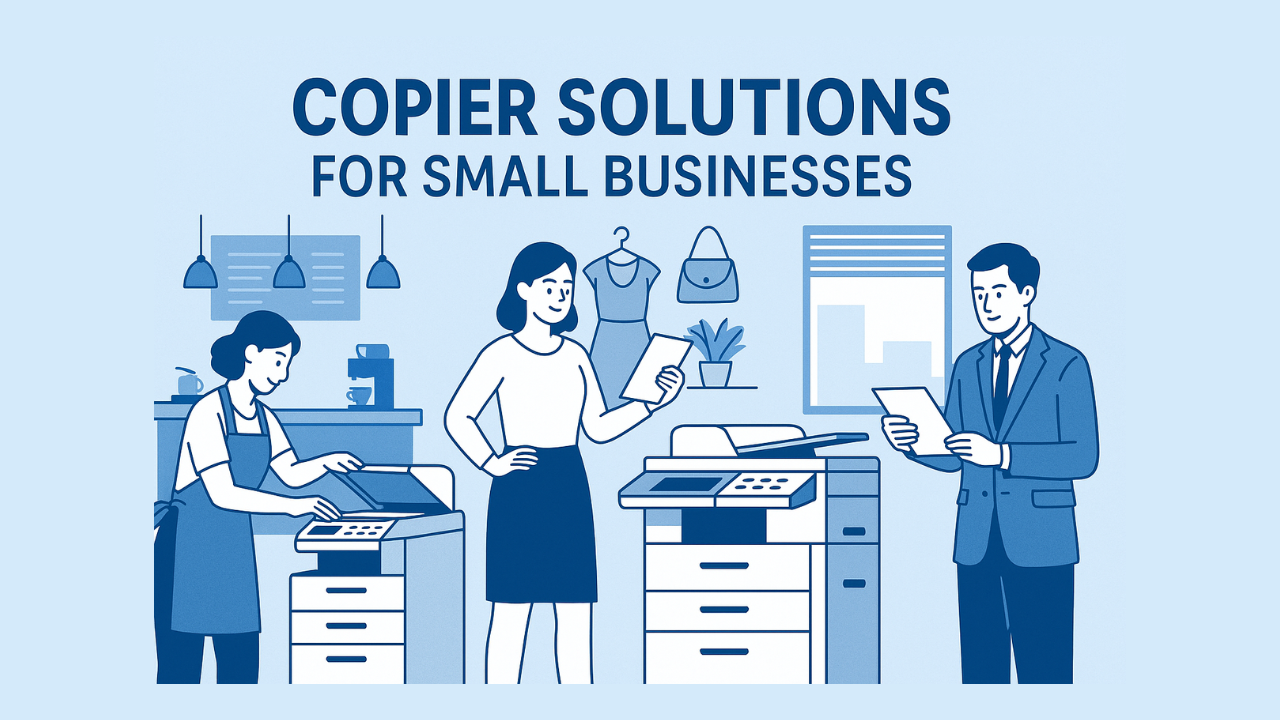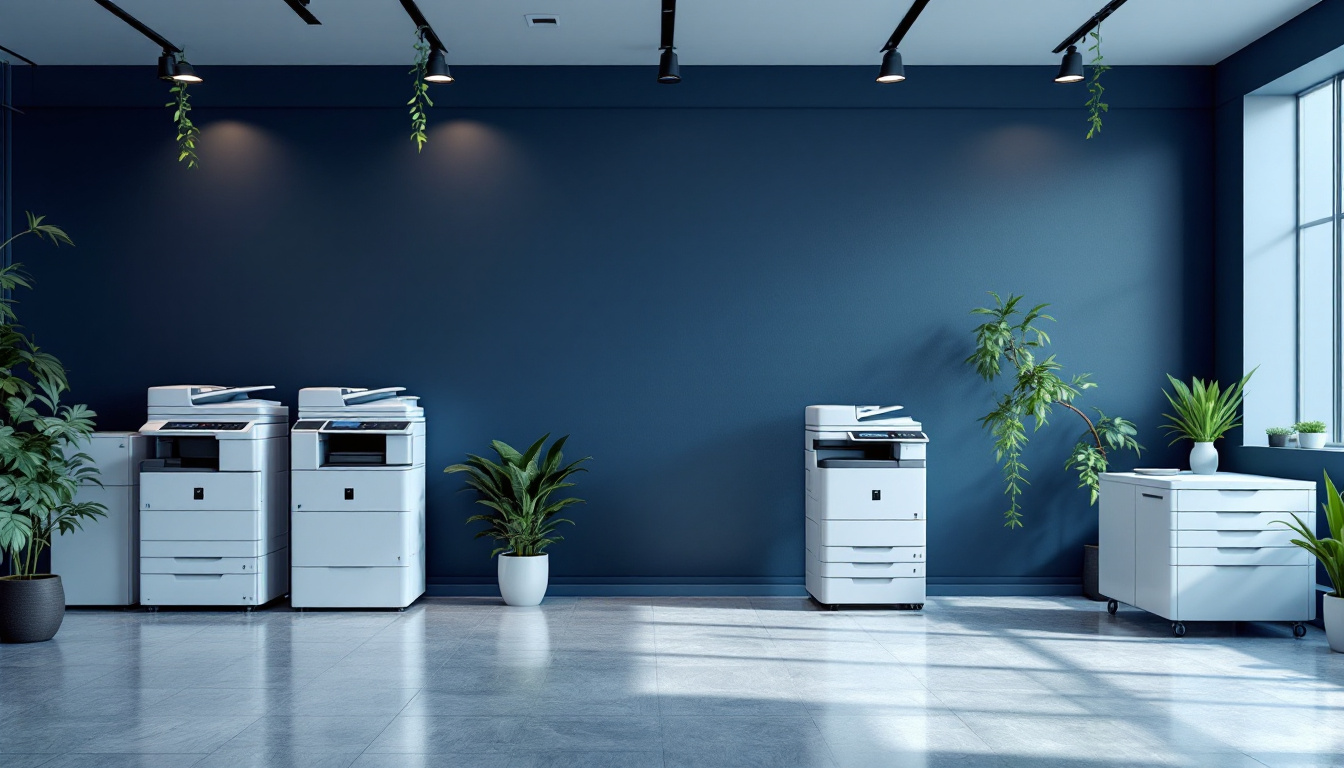Balancing Budget and Environmental Responsibility in Copier Choices
Choosing the right copier is crucial for any business aiming to minimize operational costs while supporting sustainability goals. An informed selection involves evaluating numerous factors—from initial purchase price to long-term energy and maintenance costs, alongside eco-friendly features. This comprehensive guide explores how organizations can balance these considerations to make optimal, environmentally responsible choices that align with their financial strategies.
Understanding Business Needs and Usage Patterns
 When selecting a copier, it’s essential to analyze your organization’s annual print volume, document types, and paper handling requirements. These factors directly influence the choice of a machine that fits your operational demands without compromising performance or efficiency.
When selecting a copier, it’s essential to analyze your organization’s annual print volume, document types, and paper handling requirements. These factors directly influence the choice of a machine that fits your operational demands without compromising performance or efficiency.
Annual Print Volume indicates how many pages your office prints each year. High-volume environments require robust, high-capacity copiers capable of handling large workloads with minimal downtime. Knowing your volume helps determine the machine’s speed (measured in pages per minute, or PPM) and its capacity, ensuring it can sustain your daily operations.
Document Types refer to the kind of files you regularly print or scan. For instance, professional presentations may demand high-resolution color printing, while routine memos can be produced in black and white. Understanding the nature of your documents allows you to select models that support necessary features such as color accuracy, duplex scanning, or high-resolution output.
Paper Handling Requirements include the volume and variety of paper types used, such as letter, legal, or specialty papers. Copiers with multiple paper trays and adjustable guides accommodate different sizes and types, reducing the frequency of paper reloads and ensuring smooth workflows.
Best Practices for Maintaining Copiers to Reduce Costs and Environmental Footprint
Regular maintenance plays a vital role in extending copier lifespan and ensuring efficient operation. Implementing scheduled servicing, including cleaning components, replacing worn parts, and updating software, helps prevent costly breakdowns.
Choosing energy-efficient models with automatic sleep modes and duplex printing capabilities reduces both energy consumption and paper usage. Empower staff with training on proper copier operation and responsible printing habits to optimize resource use.
Monitoring software can track print volumes and identify unnecessary printing, guiding policies to curb waste. Encouraging digital workflows and print reduction strategies—like duplexing and draft modes—further minimizes environmental impact.
Opting for leasing agreements or refurbished machines often proves cost-effective while supporting sustainability goals. Maintenance contracts that include routine inspections, combined with the use of recycled supplies such as toner cartridges and paper, contribute positively toward ecological responsibility.
Tips for a Cost-Effective and Eco-Friendly Printing Approach
Developing a transparent, organization-wide print strategy is crucial. Promote responsible practices like double-sided printing and digital documentation, which significantly cut costs and waste.
Invest in ENERGY STAR-rated printers and multifunction devices equipped with eco-friendly features like low emissions and eco-ink options. Centralized print management tools and analytics help monitor consumption, identify inefficiencies, and adjust usage policies accordingly.
Implement secure print release and pull printing solutions to prevent unnecessary prints and safeguard sensitive data. Recycling programs for toner cartridges and paper, combined with partnerships with sustainable suppliers, reinforce your environmental commitments.
Regularly evaluate your printing needs and streamline workflows to adapt to changing organizational requirements. These practices ensure ongoing savings, reduced environmental footprint, and alignment with responsible resource management principles.
| Aspect | Recommendations | Additional Details |
|---|---|---|
| Volume Handling | High-capacity machines for large volumes | Supports heavy-duty cycles, reduces refills |
| Document Types | Color and high-resolution support, scanning options | Enhances productivity and professional output |
| Paper Handling | Multiple trays, adjustable guides | Supports various paper sizes and types |
| Maintenance | Regular preventative servicing, staff training | Extends lifespan, reduces breakdowns |
| Energy Efficiency | ENERGY STAR models, sleep modes, duplexing | Cuts energy and paper usage |
| Sustainability Features | Recycled materials, recycling programs, eco-friendly toner | Supports environmental goals |
| Cost-Management | Leasing options, refurbished units, print management software | Balances initial investment and ongoing costs |
| Responsible Usage | Digital workflows, responsible printing policies | Minimizes waste and operational costs |
| Eco-Conscious Choices | Eco-friendly suppliers, minimal emissions, low-impact consumables | Aligns with ecological sustainability |
Choosing the right copier involves a thorough understanding of your business’s specific printing needs. Regular maintenance and eco-conscious practices not only prolong machine life but also significantly reduce costs and environmental impact. Incorporating smart policies and advanced technology ensures your organization remains productive, sustainable, and economically efficient.
Balancing Costs with Eco-Friendly Features

What factors should I consider when balancing the purchase price, operational costs, and sustainability features of copiers?
When evaluating copiers, it's important to analyze the total cost of ownership (TCO). This includes the initial purchase price, ongoing expenses such as toner, paper, maintenance, and energy consumption, as well as disposal costs.
Eco-friendly features can impact both costs and sustainability. Features like sleep modes, automatic duplexing, and low-emission components help reduce energy use and waste. Choosing models with ENERGY STAR certification often means lower utility bills due to energy-efficient operation.
Managing costs also involves forging strong relationships with suppliers, exploring options like refurbished or leased copiers, and adopting print management programs. These strategies help control expenses without compromising quality or environmental responsibility.
Finally, leveraging technology such as print analytics and IoT-based monitoring optimizes usage patterns, prevents waste, and supports long-term savings. Aligning procurement choices with specific environmental objectives and operational needs ensures a balanced approach that maximizes value over the device’s lifespan.
What are the trade-offs involved in choosing between more affordable and more sustainable copier options?
Selecting between budget-friendly and eco-conscious copiers involves assessing immediate costs versus long-term benefits. Less expensive models can seem attractive upfront but may lack energy-efficient features like automatic duplex printing, energy-saving modes, or environmental certifications. This often results in higher ongoing energy bills and increased environmental impact.
Conversely, sustainable copiers tend to cost more initially but include features designed to minimize power consumption and waste. These features not only reduce carbon footprints but also contribute to lower operational costs over time.
The decision often hinges on balancing your current budget with future savings. An investment in energy-efficient, certified devices may appear costlier initially but can be more economical over the device's life due to reduced energy bills, lower waste disposal costs, and fewer repairs.
By closely examining your copying volume and future needs, you can choose a model that offers both operational efficiency and sustainability, turning environmental benefits into cost savings.
| Consideration | Budget-Friendly Options | Sustainable Choices | Details and Impacts |
|---|---|---|---|
| Initial purchase price | Lower upfront cost | Higher initial investment | Affects short-term budget constraints |
| Operating costs | Potentially higher due to energy and waste | Lower due to energy-efficient features and materials | Impacts long-term expenses |
| Environmental certification and features | May lack certifications like ENERGY STAR | Often include eco-labels and features supporting sustainability | Influence energy use and waste reduction |
| Long-term savings | May be limited if energy costs are high | Can lead to significant savings through efficiency | Cost-benefit depends on device longevity and usage patterns |
| Overall value | May not justify initial savings if operational costs are high | Usually provides better value over time | Critical to consider total lifecycle expenditure |
Adopting eco-friendly operations through reliable, durable, and energy-efficient copiers not only supports environmental goals but also reduces financial burdens. Heavy-duty, high-capacity models with advanced security, connectivity, and maintenance features can enhance productivity while aligning with sustainability. By carefully weighing upfront costs against ongoing expenses, businesses can make smarter decisions that benefit both the planet and their bottom line.
Additional Considerations
Evaluating models based on their ability to support future scalability, incorporate smart management features, and offer robust security ensures comprehensive value. This way, companies can adapt to changing needs without frequent replacements or costly upgrades.
Choosing eco-friendly devices with recyclable components, using refillable toner cartridges, and supporting cloud-based solutions further solidify a commitment to sustainability. The market in 2025 continues to emphasize digital integration, security, and eco-conscious manufacturing, guiding businesses toward smarter, greener printing solutions.
Eco-Friendly Features and Their Benefits

What are the key eco-friendly copier features and their benefits?
Eco-friendly copiers are designed to minimize their impact on the environment while supporting sustainable business operations. They typically include features such as energy-efficient designs with power-saving modes like sleep and auto-off, which significantly reduce electricity use during periods of inactivity. This not only lowers the device’s carbon footprint but also decreases energy bills.
Many eco-conscious copiers support duplex printing and scanning, which reduces paper consumption by enabling double-sided printouts. Additionally, they often incorporate recycled materials, such as ocean waste plastics or sustainable substances like bamboo, to manufacture parts, promoting a circular economy.
Toner management is another critical aspect, with soy-based toners and extensive recycling programs that help reduce chemical waste and landfill accumulation. Certifications like ENERGY STAR validate their efficiency and environmental benefits. Moreover, modern copiers are equipped with cloud integration and digital workflows, encouraging paperless operations and resource conservation.
These eco-friendly features do not just benefit the planet; they also offer cost savings over time. Lower energy use, reduced paper and material expenses, and decreased maintenance costs contribute to an overall economical choice for environmentally minded businesses.
How can I select energy-efficient and eco-friendly copiers without overspending?
Choosing an energy-efficient and eco-friendly copier without breaking the bank requires careful consideration of several factors. First, look for models with ENERGY STAR certification, which guarantees adherence to strict energy-saving standards.
Evaluate the device’s features, such as automatic sleep modes, auto shut-off functions, and duplex printing capabilities. These features contribute significantly to reducing power consumption during idle periods and when printing in duplex mode.
Sizing is also important; select a model that matches your expected workload. Smaller models are usually cheaper and consume less energy but may not handle high-volume demands well. On the other hand, larger-capacity copiers with multiple paper trays can be more efficient for heavy use, especially if they are ENERGY STAR certified.
Assess the total cost of ownership, ensuring that initial purchase prices are balanced with ongoing operational costs like toner, paper, and maintenance. This helps prevent overspending in the long run.
Finally, focus on your specific needs—such as color printing, network connectivity, or multifunctionality—and compare different models to find an optimal solution that combines performance with sustainability. This way, you can make eco-conscious choices without exceeding your budget.
Making an Informed Purchase in Line with Sustainability and Budget

How can I make an informed copier purchasing decision that aligns with both my budget and sustainability goals?
Choosing the right copier involves a careful balance of cost, functionality, and environmental impact. To begin, compare different models not just by their upfront price but by their total cost of ownership (TCO). TCO includes ongoing expenses such as toner, paper, maintenance, energy, and potential repairs. This comprehensive view helps identify long-term savings and avoids surprises.
One of the crucial eco-friendly indicators is the device's certification. Prioritize models with recognized energy efficiency labels like ENERGY STAR, EPEAT, or Blue Angel. These certifications suggest the copier adheres to stringent standards for energy use and environmental responsibility.
Beyond certifications, consider features that reduce resource consumption. Automatic duplex printing, for example, cuts paper use in half. Power-saving modes and sleep functions further diminish energy consumption during idle periods.
Responsible disposal and recycling are vital for supporting sustainability goals. Regular maintenance and using refurbished or remanufactured units can extend your copier’s lifespan. Many manufacturers and third-party services offer recycling programs for toner cartridges and old machines, reducing landfill waste and promoting eco-friendly practices.
Long-term savings are attainable through smart operational choices, such as reducing color printing to essential documents, utilizing digital sharing, and leveraging print management software to monitor usage.
In summary, making an eco-conscious purchase isn't solely about initial cost; it involves evaluating energy efficiency, consumables, durability, and end-of-life disposal. Finding this balance allows you to choose a copier that aligns with both your financial constraints and your sustainability commitments.
Achieving the Optimal Balance Between Cost and Sustainability
Selecting a copier that effectively balances cost and sustainability is essential for environmentally conscious and budget-aware organizations. By thoroughly evaluating features, operational costs, and environmental impacts—such as energy efficiency, material sustainability, and lifecycle management—businesses can make informed choices. Incorporating digital workflows, responsible maintenance, and eco-certified models ensures operational excellence while supporting sustainability goals. Regular reviews and strategic procurement practices further optimize this balance, contributing not only to cost savings but also to a greener, more responsible office environment.
References
- Top Five Factors to Consider When Choosing the Right Copier for ...
- A Greener Office: How to Choose an Eco-Friendly Printer or Copier
- How To Save Money And Make Smart Choices On Copier Costs
- 10 Effective Ways to Cut Costs on Office Copiers - AIS Now
- How To Choose The Best Color Copier And Printer for Your Home ...
- The Ultimate Guide to Choosing High-Capacity Copiers for Your ...
- 2025 Copier Buyer's Guide: Compare Canon, HP, Kyocera & More
- Energy-Efficient Copiers: A Green and Cost-Effective Solution
- The Lifecycle of a Copier: Maximising Sustainability from Purchase ...
- The Lifecycle of a Copier: Maximising Sustainability from Purchase ...




.png)

.png)
























